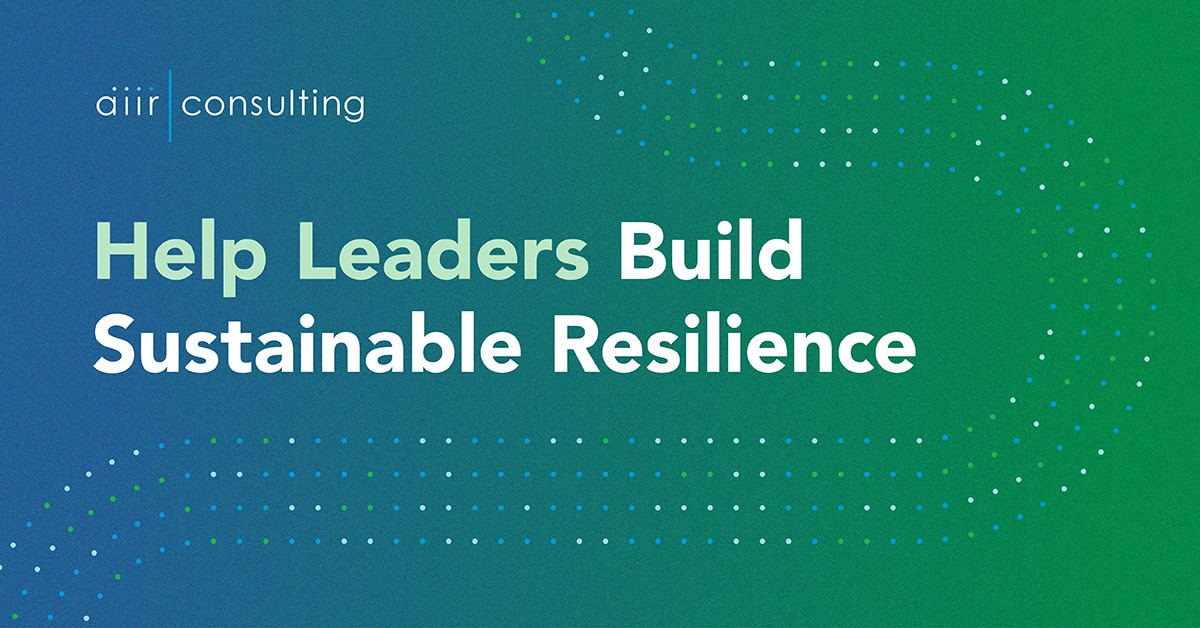
Helping Leaders Build Sustainable Resilience
April 26, 2023
Life Keeps Handing Your Leaders Lemons. Do They Have the Capacity to Keep Making Lemonade?
After two years of chaos and continuous change, most leaders were hoping for an easier year. Instead, 2023 has handed leaders a lot of lemons — inflation and aggressive increases in interest rates, a talent shortage, and now job cuts that have soared nearly 400% compared to the same period last year.
They aren’t handling it well.
Most leaders respond to stress by putting in increasingly long hours and pushing themselves (and their employees) harder. That’s because we tend to think of resilience in heroic terms — as Churchill famously said, “If you’re going through hell, keep going.”
But research shows that this form of resilience is unsustainable. Pushing yourself past the point of exhaustion leads to reduced working memory and capacity for problem solving, less creativity, and worse outcomes at work. It also increases your chances of burnout.
To wit, 30% of executives said they are constantly stressed, overwhelmed, exhausted — even depressed. And more than two-thirds of workers report feeling burned out. How can you help leaders at your organization build a more sustainable form of resilience?
Where Did We Get This Research?
This is an excerpt from our report, Lead or Be Led. AIIR recently surveyed 136 of its senior leadership consultants. These consultants have worked endlessly with more than 5,000 senior executives spanning five continents and in various major industries. You can find the full results of the survey in our report.
1. Put Your Oxygen Mask on First, Then Help Others
Year after year, we encouraged leaders to acknowledge their own limits and hold compassion for them. Now, it’s more important than ever. For example, 76% of executives said the prolonged pandemic has negatively affected their well-being. The same study showed that more than 30% said they are constantly stressed, overwhelmed, exhausted — even depressed.
The workplace looks to its leaders in moments of uncertainty. It is their responsibility to rise above the challenges of our current context, cut through the chaos, and chart a path through the crisis. But, you can’t do that if you’re in a crisis yourself. Rather than pushing themselves to work ever-expanding hours, leaders need to tend to their mental, physical, and psychic health.
Leaders also need to acknowledge the limits of their employees. Consciously or unconsciously, employers have been capitalizing on the unprecedented spike in “panic” productivity that characterized the past couple of years. Now, the expectation of overwork seems baked in — 63% of employees say their job doesn’t allow them to disconnect. And tech leaders like Mark Zuckerberg and Elon Musk have made high-profile demands that their workers “be hardcore” and do more without an expectation of added pay or benefits.
Rather than focusing on the number of hours they spend in the office, leaders should seek to reinforce a less-is-more mindset by building a simple question into their cultures: What can you be doing less?
“Leaders are community members who have been struggling with the same hardship as their employees. They need to ensure that they have the individual support and strategies that allow them to show up for their teams.”
2. Protect Your Surge Capacity
Leaders and employees alike will need to build resilience and cope with the stress caused by the extra work. Resilient people experience less stress and better mental and physical health, making them more equipped to adapt to change and overcome setbacks.
But most of us tend to think of resilience in heroic terms. And while perseverance or “grit” are important components of resilience, and do contribute to long-term career success, too many take the idea to its toxic extreme. Instead, leaders should focus on building sustainable resilience by protecting their “surge capacity” — the mental and physical resources we use to survive acutely stressful situations.
“Time will reinforce the importance of human-centered leadership for driving engagement, empowerment, and inclusivity. When employees feel seen, heard, valued, and supported they are able to innovate, create, and focus on each other and the customer in ways that we can only imagine now.”
3. Build Cultures of Self-Compassion
In the current environment, leaders and their teams will no doubt experience setbacks. To ensure these setbacks don’t knock them off course, leaders need to develop the capacity for self-compassion, a psychological construct centered on three behaviors: being kind rather than judgmental about your own failures and mistakes, recognizing failure as a human experience, and taking a balanced approach to experiencing negative emotions without letting them overwhelm you.
Building self-compassion into your culture will create an atmosphere of psychological safety in which team members feel safe both to admit their mistakes and point out the mistakes of others without fear of retribution.
“Leaders will need to find the sweet spot between balancing team motivation with delivering results, supporting team members in feeling safe to bring their whole selves to work, and creating a strong corporate culture. There are no straightforward, cookie-cutter answers. Leaders will require courage, maturity and creativity to navigate these nuances with grace, strength and clarity.”
Are You Ready To Shape A Better Future Together?
Partner with AIIR to empower your leaders and ascend into the future.